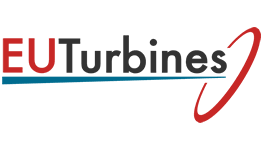Spotlight on: Digitalisation and Turbine Technology
20 September 2019
The complex energy ecosystem presents new challengers for all energy players that require new flexible solutions. The digitalisation of the energy system is equally transforming the energy industry. In this article EUTurbines puts the “Spotlight on: Digitalisation and Turbine Technology”.
Digital transformation in Europe
Digital technologies are transforming the global and European economy and society. In an effort to steer this development the EU laid out a policy framework, structuring and regulating the digital revolution, aiming at a “Digital Single Market” for the benefit of all Europeans.
In power generation, the digital transformation is closely connected to data about consumer behaviour, which should help improving the overall system. Smart meter and smart grids not only empower the consumer to optimise consumption, but also provide valuable data for adapting power generation to the demand patterns and to the changing availability of electricity from wind and PV. Integrating this information and using at the same time the large amount of data generated by turbine-based power plants can help improving the overall efficiency of the power system, while ensuring the reliability of power delivery and quality.
Power Plants in a digitalised energy system
1. Integrating the plant into the grid – communication with the grid
In the traditional power system, a limited number of centralised power plants delivered electricity to consumers and the grid in-between was a one-way street. Today, with consumers becoming energy producers – so called prosumers – and storage solutions existing at all levels of the system, the energy and information flows have become much more dynamic and complex. Managing this new complexity requires the exchange of an enormous amount of information, which is only possible via a consistent digitalisation – from the light bulb of the consumer to the large turbine in the power plant.
One challenge that can be addressed through digitalisation is the continuous optimised provision of reliable power to fill the gap between demand and the availability of variable renewables – the so-called residual load. Adapting the operation of the turbine in the power plant to the required residual load not only needs an operational flexibilisation of the turbine technology but also the timely availability and integration of information from the grid about the expected size of the residual load – both areas with a lot of recent progress.
Another important aspect is the integration of price information in the operation of power plants. In the future, flexible thermal power generation will usually not operate in baseload but will need to generate income during limited times of operation. At the same time, an increasing amount of electricity is traded via exchanges. Getting the price information, aligning it with information about grid availabilities and steering the operation of the power plant accordingly is a complex challenge, which needs a high level of digitalisation.
2. Enhancing the plant’s operation and maintenance
Improved measurements possibilities – through miniaturisation of sensors, wireless communication and lower prices – lead to improved and available analytics on real-time performance of the turbine. This increases the efficiency, affordability, reliability and sustainability of the entire system. Today, this simultaneous monitoring and tracking of thousands of sensors enable the development of a power plant’s ‘digital twin’, which can be used to constantly optimise the most efficient operation.
This continuous analysis of the turbine and its environment also enables to detect operational abnormalities, learn from them and correct them at an early stage – the so-called predictive maintenance. This approach leads to a prolonged turbine life-span and a reduction of unplanned outage periods for turbines and generators.
3. Improving the design of turbines and power plants
Today, thanks to digital monitoring and data collection, turbine manufacturers can develop 3D turbine models. Collected data such as gas turbine pressure conditions, temperatures, component stress and rotating speed allow the simulation of a turbine operation in a specific environment with a complete digital model.
Simulations of different operational modes allow for a better understanding of the turbine and plant behaviour and provide valuable information for a further improvement of the design of turbines. A typical example is the reduction of noise emissions through simulations involving acoustic software and data from comparative measurements, considerably reducing the need for expensive hardware testing.
Finally, in combination with 3-D printing, digitalisation facilitates new logistics. Turbine manufacturers do not store replacement parts anymore, but they store the technical information instead and provide a customised spare part thanks to 3-D printing when needed.
Outlook
Energy infrastructure is a very sensitive area, as the reliability of the system is key for the functioning of the economy. Digitalisation in the energy sector goes hand-in-hand with a strongly growing amount of digitally-stored, sensitive information and a large number of interfaces connecting power generators, grid and consumers. Cybersecurity has become an extremely important challenge in this area. Ensuring the safety of data and of the system, while supporting the communication between all elements of the system, will be a key issue of the energy system for the upcoming years.
Another important aspect is the further standardisation of the interactions in the system. Standardised network codes have been defined in Europe over the past years. However, it will be of high importance that these codes are adopted in the same way by all European countries, as only a full harmonisation can guarantee the efficient functioning of the overall system.
Finally, an integrated system approach needs to be further developed. Integrating different storage technologies, coupling the electricity grid with the grids for gas and heat and finally connecting other sectors like the transport sector will further increase the complexity of the system. Only digitalisation can help. The turbine, in the past often a stand-alone system, has become an important element in the middle of this system, and the turbine industry is intensively working on the full integration of the technology in the digital information flow to create an efficient digitalised energy system.


